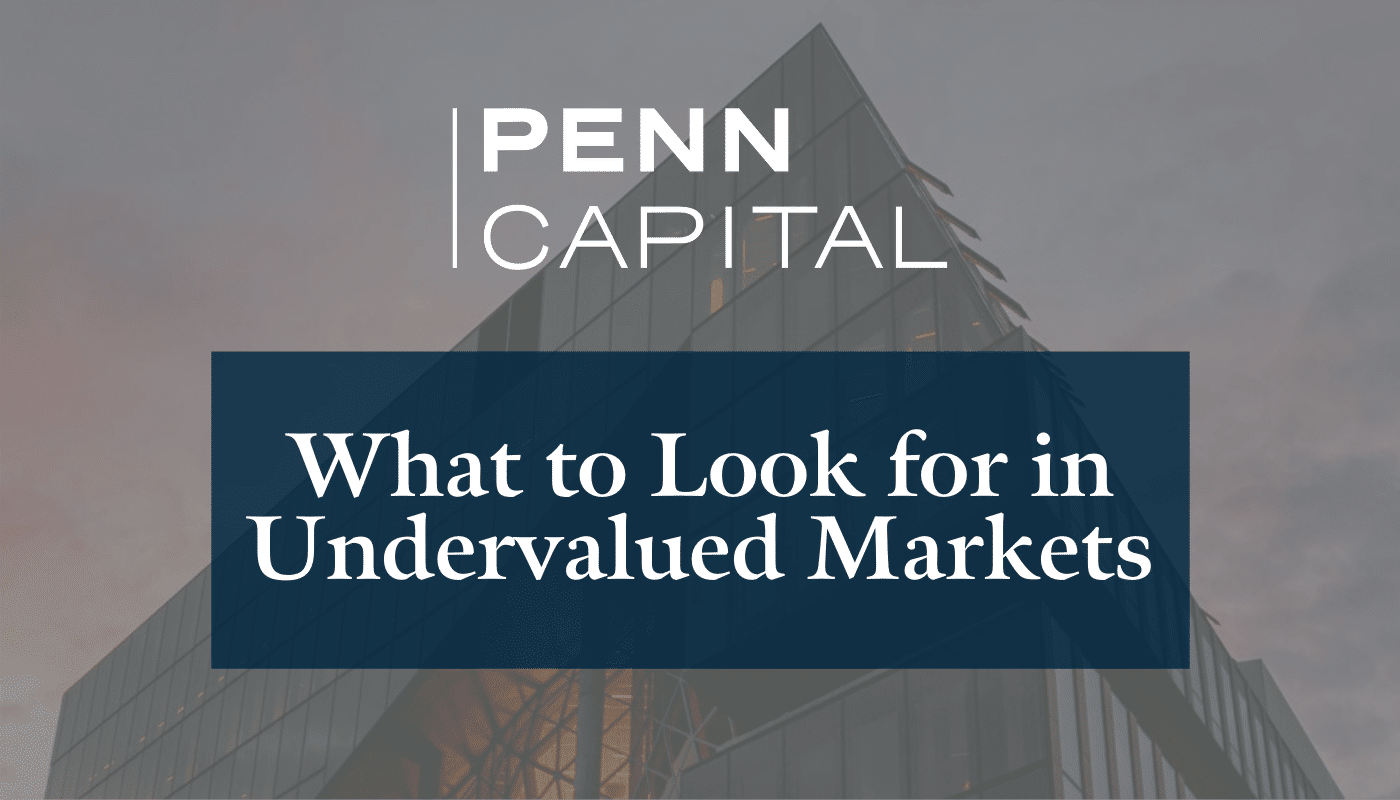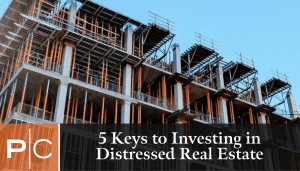What to Look for in Undervalued Markets
By Ed Rogan, Owner, Co-Founder

Location, location, location! This is probably the real estate industry’s most overused adage, but we’d be remiss to ignore a longtime truth: where investors buy matters as much – if not more than – what they buy. It’s no wonder, then, that institutional investors who have the most capital to deploy tend to concentrate their investments in “core” markets, such as Manhattan, downtown Los Angeles and the Bay Area.
The price of commercial real estate in these core markets is steep, creating a significant barrier to entry for most mainstream investors. Those who do invest here, institutional investor or not, will generally find returns to be lower than they might find by investing in undervalued markets such as greater Philadelphia or suburban Houston, Texas.
Investing in undervalued markets inherently carries more risk than investing in Class A/B real estate in core markets. That said, a private real estate fund that does its homework can mitigate some of those risks.
Here are few things to look for in an undervalued market:
Demographic Trends
Research local demographic trends. Who currently lives in the area? What is the median household income? Is the population growing or contracting? An undervalued market will often have a growing population. While you’re at it, look at the average household size (and rates of household formation). This will tell you whether you should expect to be renting to young professionals vs. families vs. empty nesters, each of which has its own renter profile. An area with predominantly families, for example, would indicate demand for larger units, such as 3- and 4-bedoom units. Young professionals and empty nesters, on the other hand, might be more drawn to smaller units but in buildings with more amenities.
Homeownership Rates
Look at whether the area tends to be dominated by homeowners or renters. Roughly 65% of Americans are homeowners compared to just 35% who are renters. How does this split look in the market you’re considering investing in? Strong rental markets often have an inverse split, with higher demand for rental housing than ownership opportunities. This is especially the case in urban areas and areas near colleges and universities, where the population is more transient.
Employment Rates
Areas with strong employment tend to be “safer” places to invest than areas with persistently high unemployment. Wages are also important. As a rule of thumb, renters should spend no more than 30% of their household income on rent each month. If a sponsor is asking you to invest in a luxury apartment syndication where units will cost an average of $2,500 per month, but local residents earn only $48,000 per year on average, this discrepancy would be a major red flag.
Economic Drivers
You should also understand what’s driving the local economy. Why would people want to live there? What’s bringing them to the area and importantly, keeping them there? In a place like Houston, for example, there are major colleges, universities and research hospitals that draw people from around the world. There are also major tech and life science companies that bolster economic growth.
When looking at local economic drivers, look for two key factors: (1) Is the local economy expanding or contracting? And (2) Is there industry/employer diversification? Ideally, you’ll want to invest in an apartment syndication located somewhere that is experiencing economic growth. Similarly, it’s important for that area to have some sort of industry and employer diversification. An area that is overly reliant on a single industry or employer can see its housing stock collapse if that employer goes out of business. Detroit is the classic example of this, having been so heavily dominated by the auto industry which later collapsed, sending the city (and housing prices) into a freefall.
Submarket Considerations
It’s also worth looking at hyper-local submarket conditions that could drive demand for local housing. For example, a suburban community that has exceptionally high-performing schools may continue to attract demand even absent any major, local employers. Similarly, an area’s economy might be struggling as a whole, but there could be a hyper-local housing driver that would encourage investment in rental housing.
Sign up to receive our educational newsletter and to gain exclusive access to our next investment opportunity.
Accessibility
An undervalued market will often have tremendous accessibility to schools, highways, public transit, and major employment centers. For example, a neighborhood on the outskirts of Atlanta might not initially seem appealing, but if you consider that renters would be able to get downtown in 10 minutes, this location suddenly becomes much more attractive to investors. Also weigh accessibility to area amenities, such as restaurants, retail, grocery stores, fitness centers, parks, playgrounds and more.
Competition
Undervalued markets often lack competition. In the case of multifamily, for example, there may only be two or three other apartment buildings in the area. These may be outdated or lack the amenities for which area renters would be willing to pay a premium. If it seems like there is no new supply coming online, but the other underlying market fundamentals are strong, it may be a sign that the submarket is significantly undervalued.
Conclusion
Real estate developers and private equity real estate fund managers are always on the lookout for the next “great” deal. This often means scouring undervalued markets for the diamond in the rough that can be transformed into a high-quality asset that generates tremendous returns for investors. Undervalued markets certainly carry their own set of risks, but an experienced sponsor will have carefully analyzed the deal to ensure the fundamentals of the market are strong. They will then build in the necessary checks and balances to mitigate risks over the duration of the holding period.
RELATED ARTICLES
5 Keys to Investing in Distressed Real Estate
5 Keys to Investing in Distressed Real Estate By Ed Rogan, Owner, Co-Founder Buying distressed real estate certainly isn’t for the faint of heart. An inexperienced investor can easily be swayed by the promise of a project sponsor who doesn’t actually have a plan for turning the property around. But that doesn’t mean you shouldn’t…
READ MORE >Gaining an Edge through Cold Calling
Gaining an Edge through Cold Calling By Ed Rogan, Owner, Co-Founder In many ways, commercial real estate is an “eat what you can kill” industry. The most successful investors, developers, brokers and other CRE professionals earn their living by scouring the market to uncover the next big deal. Ask the industry’s best and they’ll often…
READ MORE >Trial by Fire: How We Got Started
Trial by Fire: How We Got Started By Ed Rogan, Owner, Co-Founder People often use the term “trial by fire” to explain how they learned something. In our case, the term is all too appropriate. Looking back on it, the story of how Percy and I got started almost seems unbelievable. We were just…
READ MORE >


